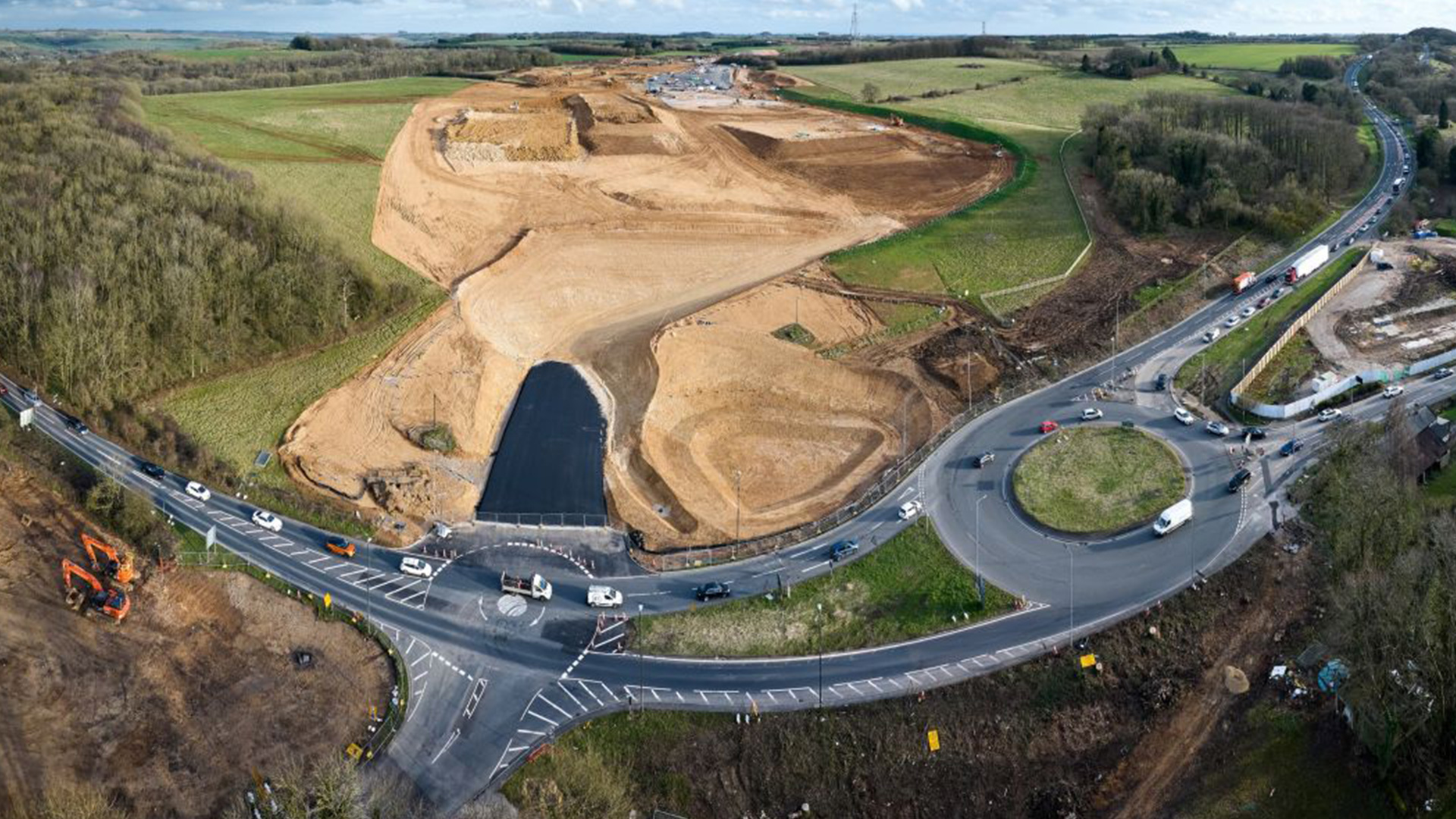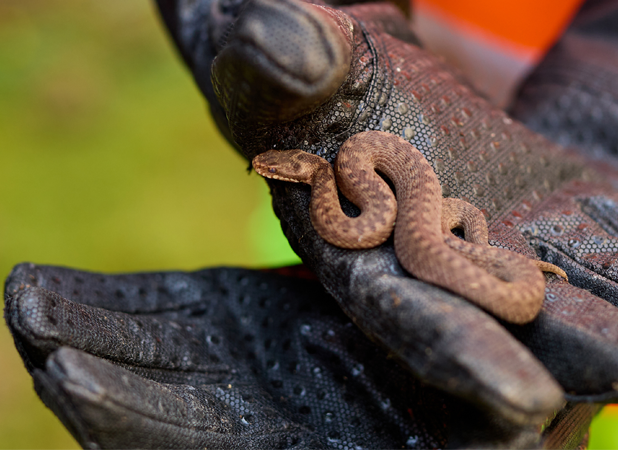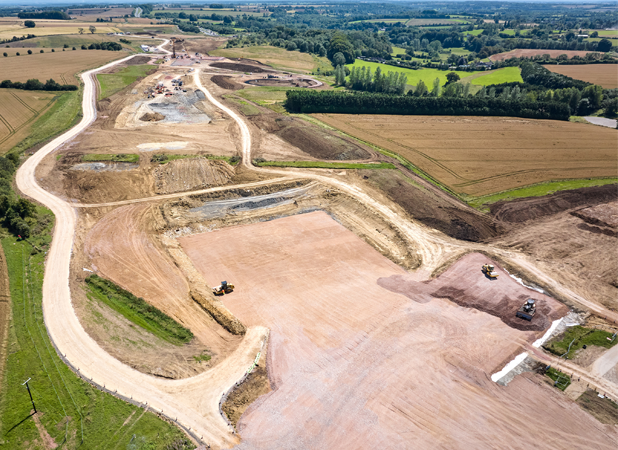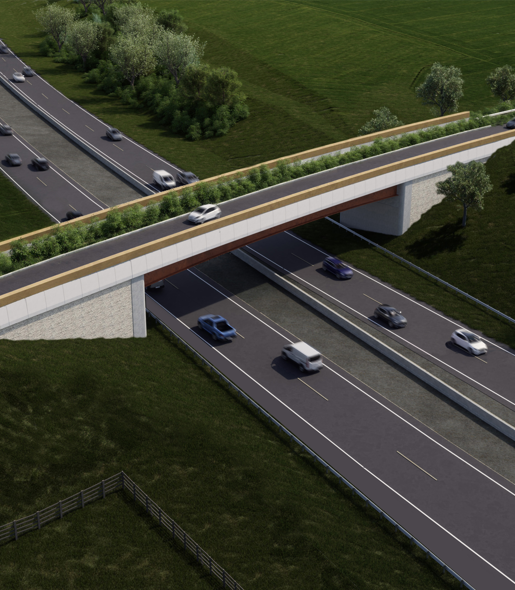The scheme is a major strategic road upgrade and offline build near Gloucester, that will deliver over three-miles of much-needed dual carriageway, while supporting active travel for the people of Gloucestershire, with improved cycling and pedestrian lanes. The increased road capacity is anticipated to reduce congestion, traffic delays and improve safety, while meeting specific requirements to preserve the Cotswold landscape.

£460m
upgrade project
c.720,000 cbm
of earth has been moved at end of Sept '24
120,000
person hours spent uncovering archaeological findings
Our 360 approach in action:
On the A417, we have worked with teams across the Group to deliver the project:
- Main contractor we are the main contractor on the project, working with National Highways and our supply chain partners to deliver the build elements of the works. We have a history of delivering successful major projects for National Highways while also focusing on sustainability, innovation and leaving a lasting legacy.
- Kier Design has provided the design works for the project, as part of the Professional Services Alliance (PSA), which includes us, Tony Gee and RPS, a Tetra Tech company. The alliance partners work together to deliver key elements of the design, with our collaborative approach noted for our success.
- Facilities management our teams from Kier Places have provided crucial facilities management to the buildings we’re working in throughout the delivery of the project We have sourced our signage from Nordis Signs, a supported business which is part of Kier

Crucial to the local area
The scheme will improve the connection between two dual carriageway sections of the A417 at Brockworth and Cowley. The road provides an important route between Gloucester and Swindon that helps to connect the Midlands/North to the south of England.
The Missing Link is a 3 1/2 mile stretch of road that causes problems for road users and those who live and work in the area. This includes congestion and safety concerns with poor visibility and other factors meaning that accidents occur frequently on this section of road.
The scheme has been designed by Arup and the Professional Services Alliance, which includes our own internal design team - Kier Design Services, alongside Tony Gee and RPS, a Tetra Tech Company.
"This scheme is vital for the area and the upgrade will mean smoother, safer and more reliable journeys for drivers. We're delighted to have made so much progress and we will build on this to deliver this new stretch of road as soon as we can."
Steve Foxley, project director for National Highways

Sympathetic to the environment
There are several bridges on the project, with the largest one being an environmental bridge, which is 37m wide, with native plants planted on it. We will also be constructing a bat underpass to give local wildlife safe passage from one side of the road to the other.
The project has deployed a highly skilled team of ecologists and archaeologists to support the conservation of the area and last year a large operation to relocate adders was undertaken, working closely with a leading UK reptile expert to find new homes for them.
The site is also being used as the testing ground for an award-winning innovation to remove microplastics from road water runoff, developed through laboratory testing by Kier and TerrAffix. Following, what we believe are, the first laboratory trials in the world to look at removing microplastics from road runoff using biochar, the project will allow further tests on how effective the solution is over time.
Community-first project
The project has delivered, and will continue to deliver, a significant amount of social value, over £10m at the end of FY24. This has been achieved through volunteer work and working with our charitable partners, in particular Great Western Air Ambulance charity and the Sam Polledri Foundation, where five defibrillators have been placed on the network in hard-to-reach walking, cycling, horse-riding locations. They have also provided training and employment opportunities in the local area.
In addition to this, we are also doing everything we can to minimise disruption to those travelling in the area, including installing new lanes for construction vehicles and building the first section of the road 'offline' - meaning we are reducing the level of disruption.




